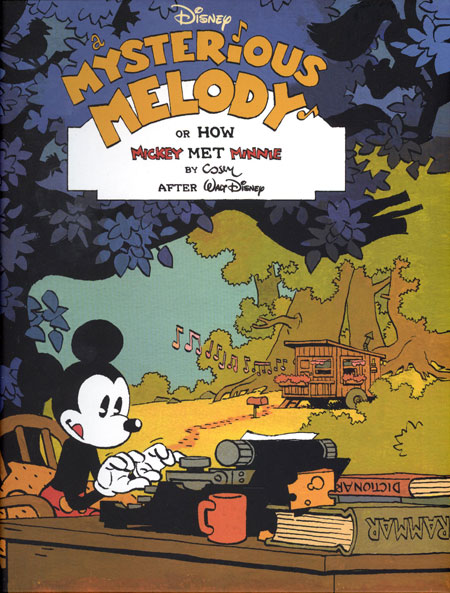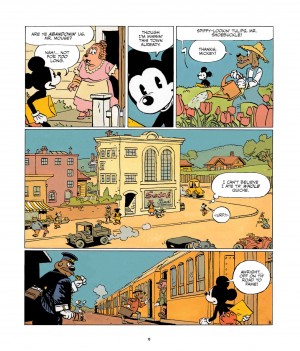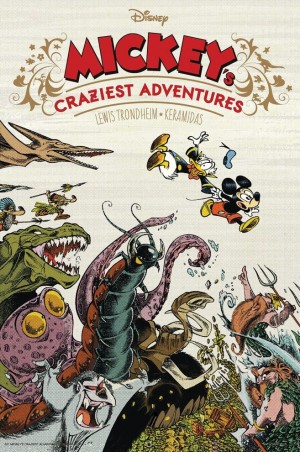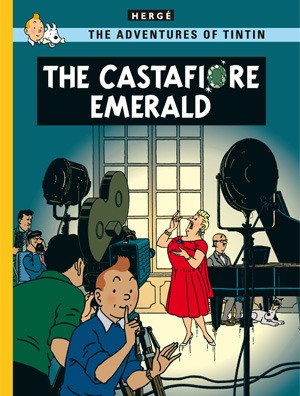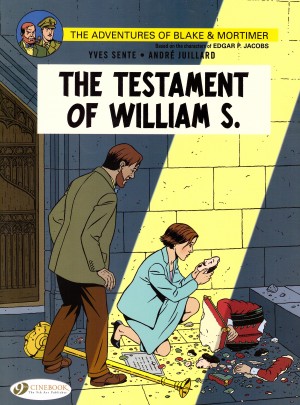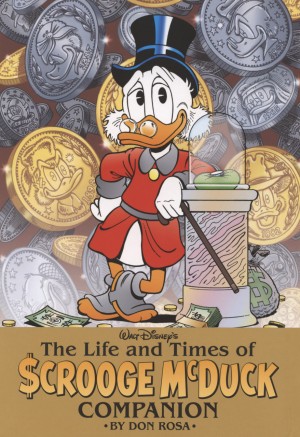Review by Frank Plowright
In the English speaking world Mickey Mouse appears to be a character whose time has passed. He succeeded Felix the Cat to become the world’s second globally recognised cartoon superstar at the dawn of animation and every decade or so Walt Disney Studios sentimentally attempt to breathe new life into the character that founded the empire. Yet he’s never really had any meaning since the 1960s as anything other than a distinctive resort host.
His comics are dependent either on the classic material of Floyd Gotfredson or European writers and artists, where Mickey sustains a higher profile. That latter statement equally applies to Bernard Cosey. He became the 43rd creator to win the Grand Prix d’Angoulême in 2017, yet is barely known to the English speaking world. His work, however, speaks for him.
A Mysterious Melody is a charming adventure respectful to the Mickey Mouse of memory, be that animated shorts or newspaper strip escapades, casting Mickey as a screenwriter in 1927 at the dawn of the talkies. Cosey cleverly constructs a quest as Gotfredson did, not for treasure or a villain, but for a lost manuscript for which the sole clue is a half-remembered melody. During the course of the adventure Cosey includes at least a nod to almost every character associated with Mickey Mouse, even if only referenced in passing. No villain is required, so Peg-Leg Pete’s only mention is in a newspaper headline. Anyone with a passing acquaintance of Mickey’s history will pick up on the multitude of carefully planted homages, and the real experts will no doubt find even more.
A problem with Mickey as a character is that he’s very one note, the very essence of good-mannered geniality. There is no bad temper as with Donald Duck, so the absence of conflict, the heart of almost any memorable story, is apparent, yet Cosey works well with that, sustaining his plot via mystery and chance, throwing in period dressing. It’s a restrained book, however, and very disciplined, seemingly simple, but with a complexity to the plot featuring multiple exchanges and dead ends. It’s also interesting that given free choice, Cosey would choose to look back, narratively at least, to a period before Mickey was renowned, unknowingly on the cusp of stardom. Distance accentuates charm.
The art is excellent for the most part, but to introduce a minor quibble, Cosey’s more used to a naturalism in his work and in places the cartoon looseness is absent. His colours are strangely autumnal, although very appealing, lapsing into red, black and white to suggest monochrome films.
Cosey wraps everything up very neatly, but unlike its companion loving homage Mickey’s Craziest Adventures, this is an adventure that children can enjoy, but not as much as adults who’ll pick up on the subtleties.
